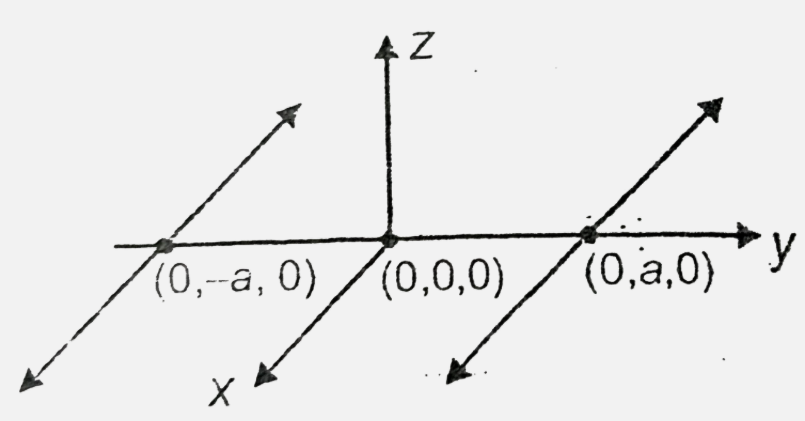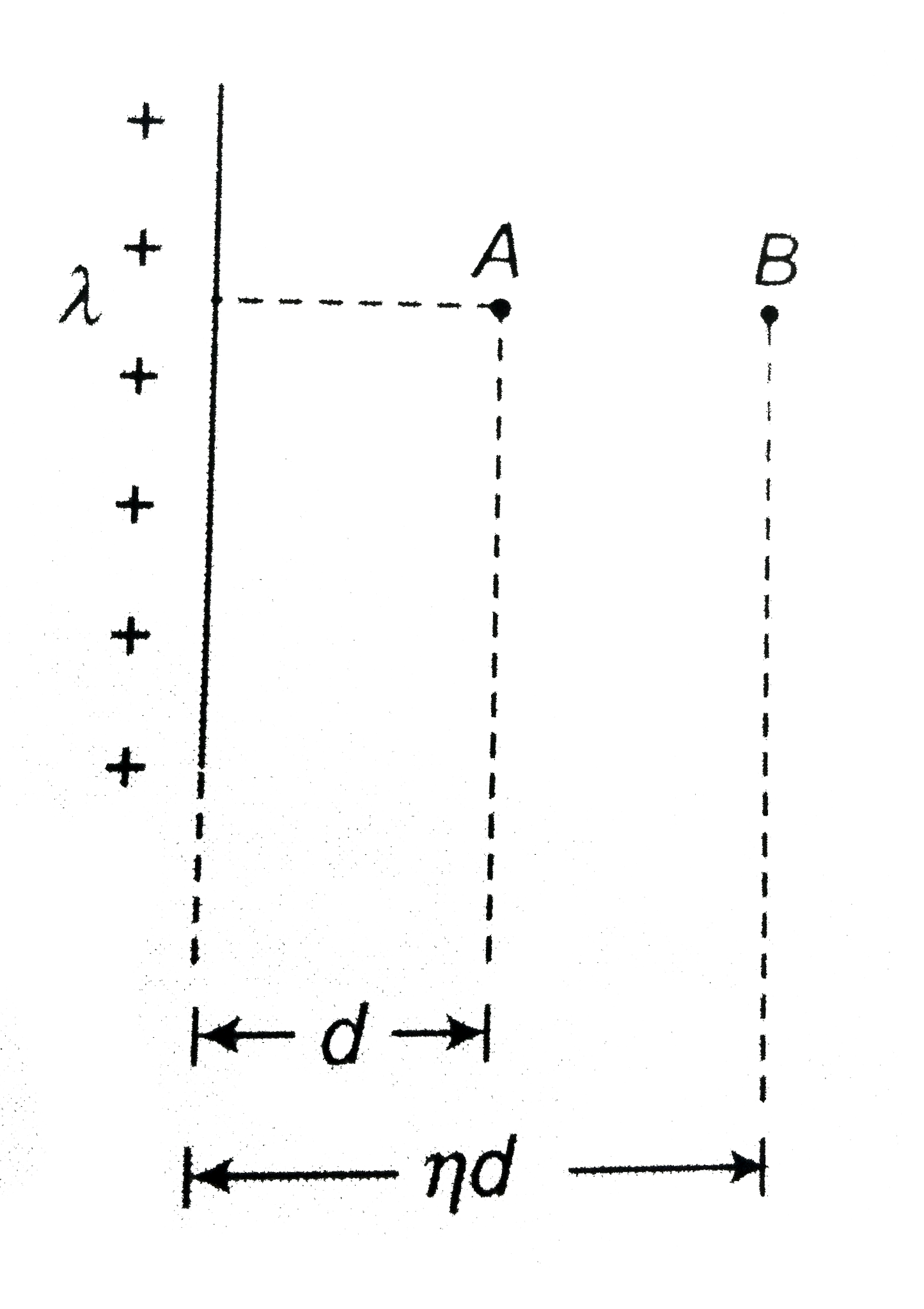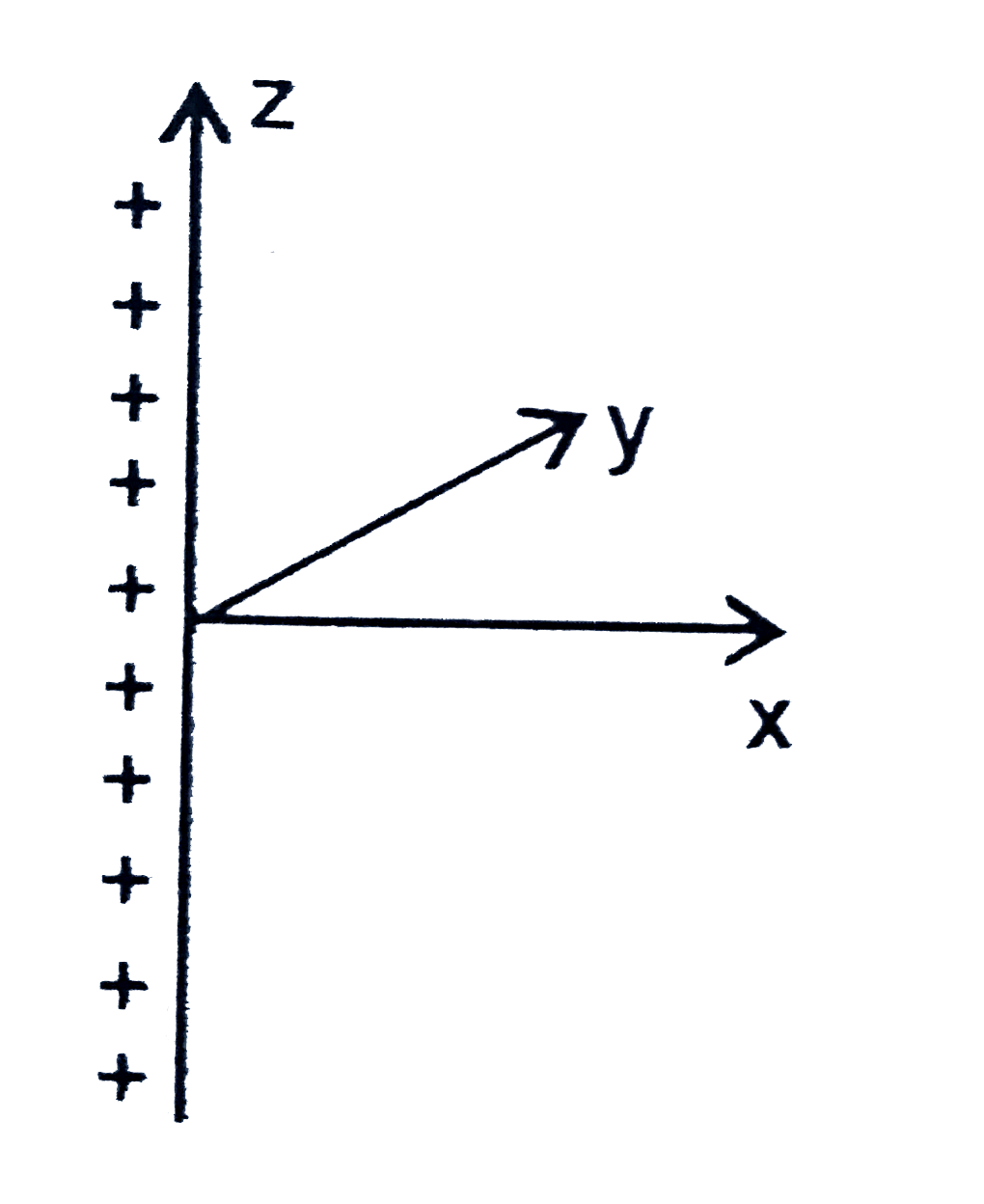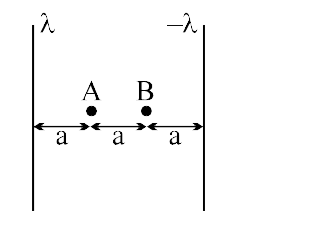Two infinitely long wires running parallel to the axis carry uniform charge density +λ and −λ
(a) Find the potential at any point( x,y,z) using origin as your reference.
(b) Write equation of the equipotential surface haing potential V0, show that it is a circular cylinder.

(a) V=λ4πε0ln[(y+a)2+z2(y−a)2+z2],
(b)(y+a)2+z2(y−a)2+z2=e4πε0Vλ
Topper's Solved these Questions
- ELECTROSTATIC POTENTIAL AND CAPACITANCE BOOK - AAKASH INSTITUTECHAPTER - ELECTROSTATIC POTENTIAL AND CAPACITANCE EXERCISE - EXERCISE
20 Videos
- ELECTROSTATIC POTENTIAL AND CAPACITANCE BOOK - AAKASH INSTITUTECHAPTER - ELECTROSTATIC POTENTIAL AND CAPACITANCE EXERCISE - ASSIGNMENT SECTION - A
47 Videos
- ELECTROSTATIC POTENTIAL AND CAPACITANCE BOOK - AAKASH INSTITUTECHAPTER - ELECTROSTATIC POTENTIAL AND CAPACITANCE EXERCISE - SECTION-I Subjective Type Questions
5 Videos
- ELECTROMAGNETIC WAVESBOOK - AAKASH INSTITUTECHAPTER - ELECTROMAGNETIC WAVESEXERCISE - ASSIGNMENT SECTION - D Assertion-Reason Type Questions
25 Videos
- GRAVITATION BOOK - AAKASH INSTITUTECHAPTER - GRAVITATION EXERCISE - ASSIGNMENT SECTION - D (ASSERTION-REASON TYPE QUESTIONS)
16 Videos
Similar Questions
There is infinitely long straight thread carrying a charge with linear density λ.Calculate the potential difference A and B.

View SolutionTwo infinite line have linear charge densities −λ and +λ. They are parallel to z axis passing through x axis at point x=−a and x=a respectively. Show that the equipotential surface having potential λln(2)4πε0 is a cylinder haivng radius 2√2a
View Solution
Knowledge Check
Two infinitely long thin styraight wires having uniform linear charge densities λ and 2λ are arranged parallel to each other at a distance r apart.The intensity of the electric field at a point midway between them is
A2λπε0Bλπε0rCλ2πε0rD3λ2πε0rAn infinite thread of charge density λ lies along z-axis. The potential difference between points A(4,3,4) and (3,4,0) is
 Aλ2π∈0In(√415)Bλ2π∈0In(5)CzeroDλ2π∈0
Aλ2π∈0In(√415)Bλ2π∈0In(5)CzeroDλ2π∈0Two infinite parallel,non- conducting sheets carry equal positive charge density σ ,One is placed on the other at distance x=a Take potential V=0 at x=0 then
AFor 0≤x≤a potential Vx=0Bfor x≥a potential Vx=σε0(x−a)Cfor x≥a potential Vx=−σε0(x−a)DFor x≤a potential Vx=−σε0x
Two infinitely long thin straight wires having uniform linear charge densities λ and 2λ are arranged parallel to each other at a distance r apart.The intensity of the electric field at a point midway between them is
View SolutionAn infinite thread of charge density λ lies along z-axis. The potential difference between points A(4,3,4) and (3,4,0) is

View SolutionBetween two infinitely long wires having linear charge densities λ and −λ there are two points A and B shown in the figure. The amount of work done by the electric field moving a point charge q0 from A to B is equal to

View Solution
The quarter disc of radius R (see figure) has a uniform surface charge density σ.
(a) Find electric potential at a point (O,O,Z)
(b). Find the Z component of electrif field at (O,O,Z)
View Solution
The quarter disc of radius R (see figure) has a uniform surface charge density σ.
(a) Find electric potential at a point (O,O,Z)
(b). Find the Z component of electrif field at (O,O,Z)
View Solution
